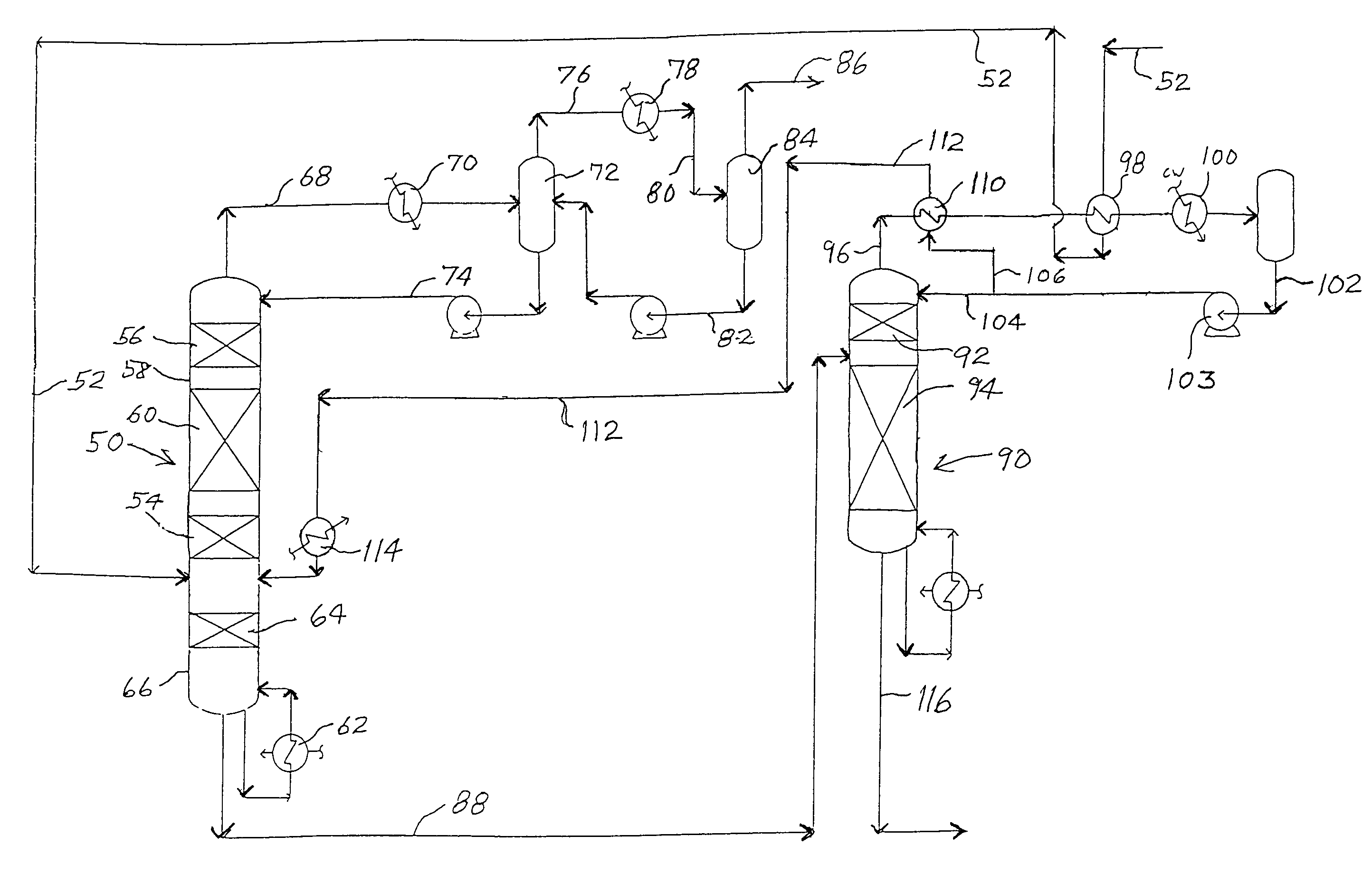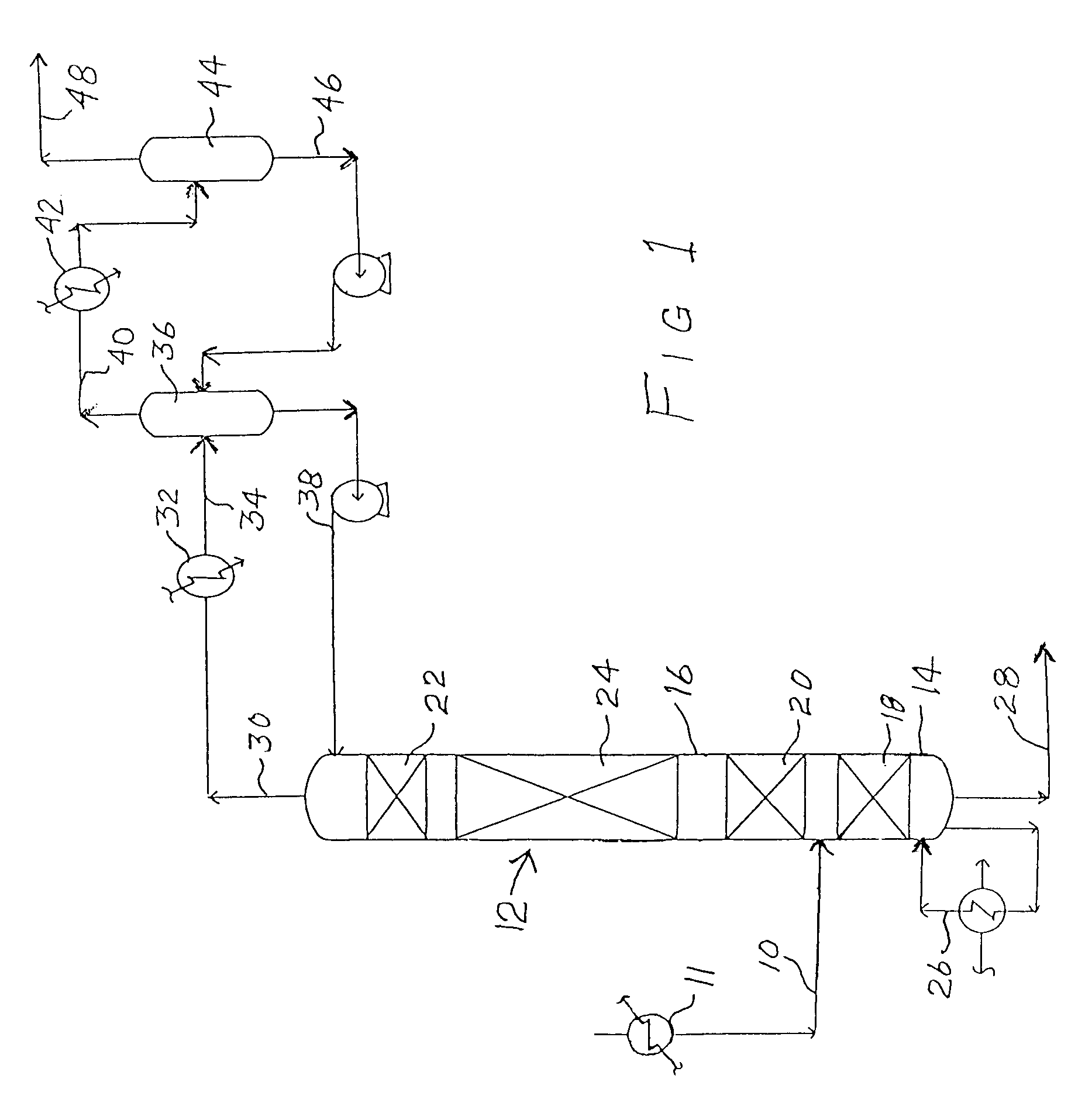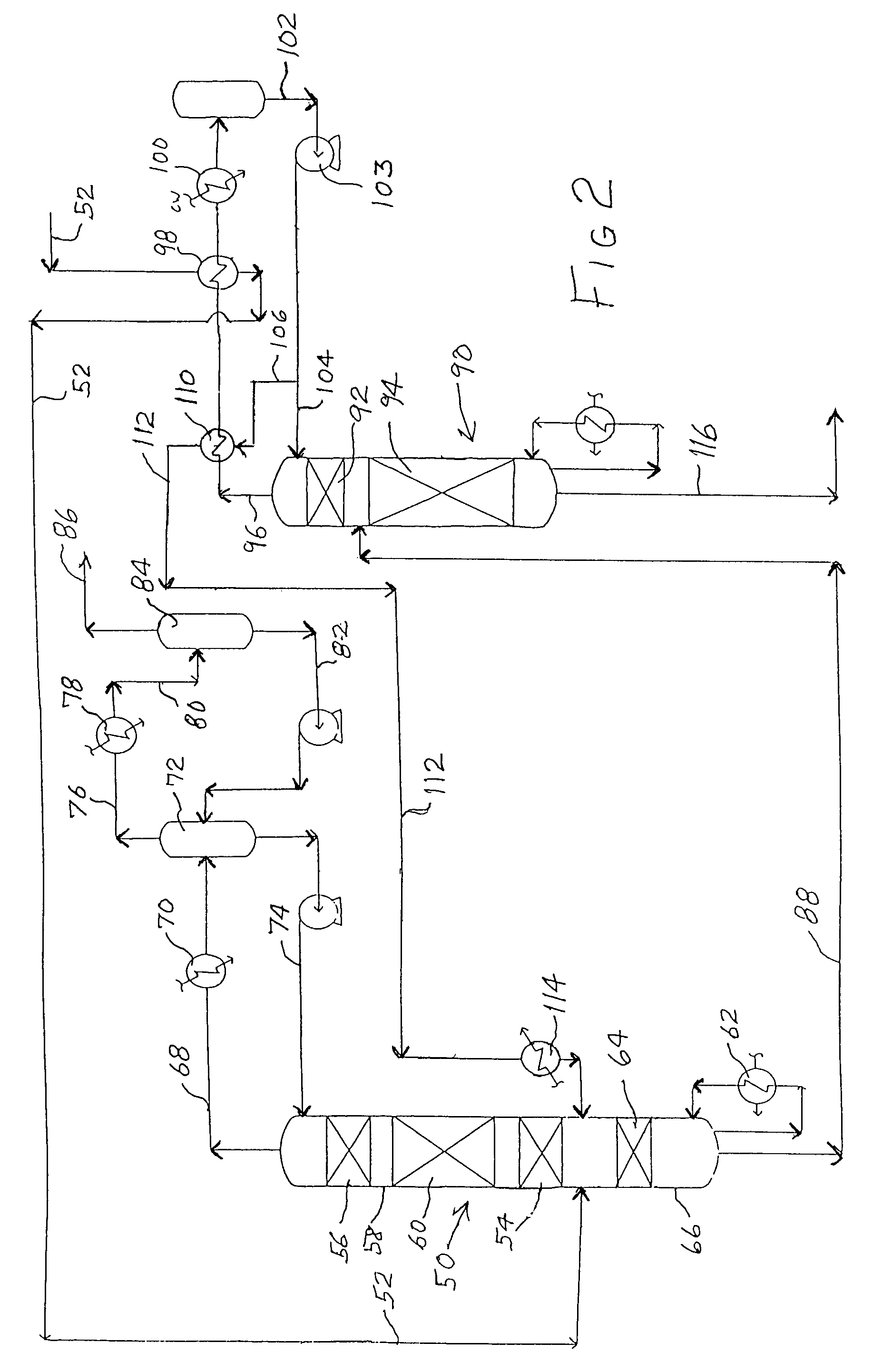Dual pressure catalytic distillation hydrogenation column system for the front end of an ethylene plant
a hydrogenation column and catalytic distillation technology, which is applied in the direction of distillation, hydrocarbon distillation, organic chemistry, etc., can solve the problems of increasing the fouling rate in the bottom of the column, increasing the temperature of the catalyst bed, etc., to reduce the fouling rate, reduce the bottoms product temperature, and maximize the catalyst bed temperature in the system
- Summary
- Abstract
- Description
- Claims
- Application Information
AI Technical Summary
Benefits of technology
Problems solved by technology
Method used
Image
Examples
Embodiment Construction
[0010]For a better understanding of the present invention, a prior art front-end catalytic distillation hydrogenation system as represented by FIG. 1 will be briefly described. As previously mentioned, such systems are disclosed and much more fully described in U.S. Pat. No. 5,679,241 and U.S. patent application Ser. No. 10 / 202,702. The objective of these systems is to remove a significant fraction of the hydrogen by hydrogenating the C2 to C5 diolefins and acetylenes without significant hydrogenation of the ethylene and propylene. In this system, the compressed charge gas 10, which may be heated at 11, is fed to the catalytic distillation hydrogenation column 12 which simultaneously carries out a catalytic reaction and distillation. The column 12 has a stripping section 14 below the feed 10 and a rectifying / reaction section 16 above the feed. Both of the sections contain distillation internals forming separation zones 18, 20 and 22 while the rectifying / reaction section 16 contains ...
PUM
| Property | Measurement | Unit |
|---|---|---|
| temperature | aaaaa | aaaaa |
| temperature | aaaaa | aaaaa |
| temperature | aaaaa | aaaaa |
Abstract
Description
Claims
Application Information
 Login to View More
Login to View More - R&D
- Intellectual Property
- Life Sciences
- Materials
- Tech Scout
- Unparalleled Data Quality
- Higher Quality Content
- 60% Fewer Hallucinations
Browse by: Latest US Patents, China's latest patents, Technical Efficacy Thesaurus, Application Domain, Technology Topic, Popular Technical Reports.
© 2025 PatSnap. All rights reserved.Legal|Privacy policy|Modern Slavery Act Transparency Statement|Sitemap|About US| Contact US: help@patsnap.com



